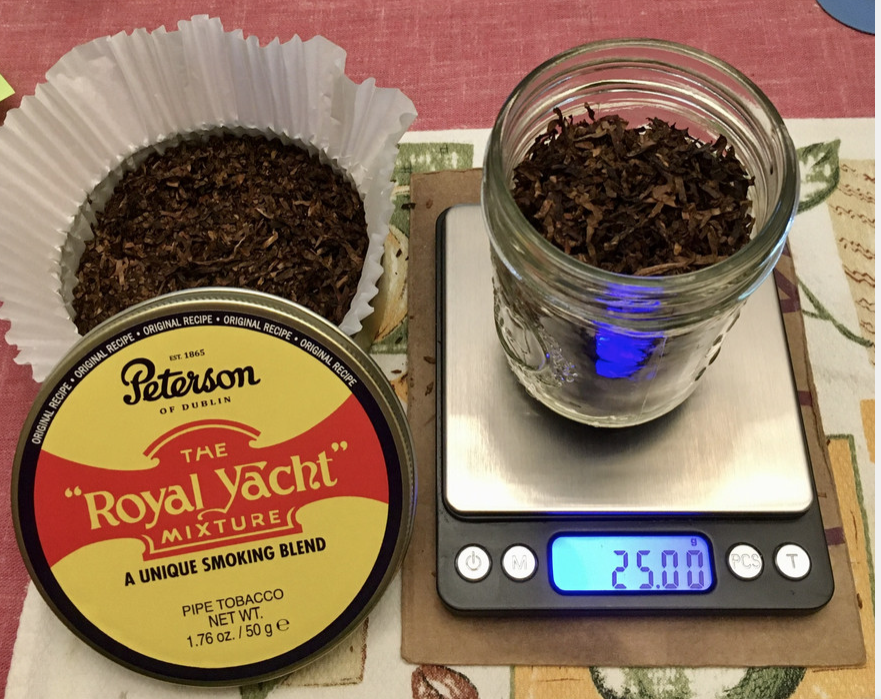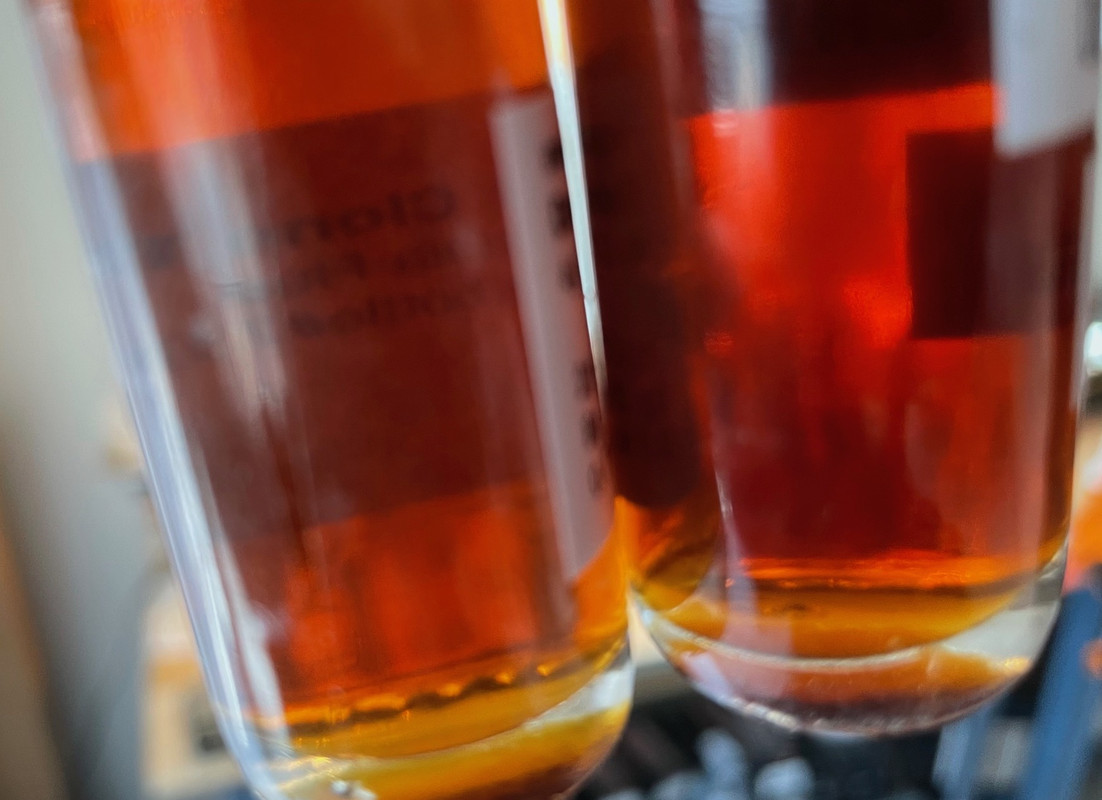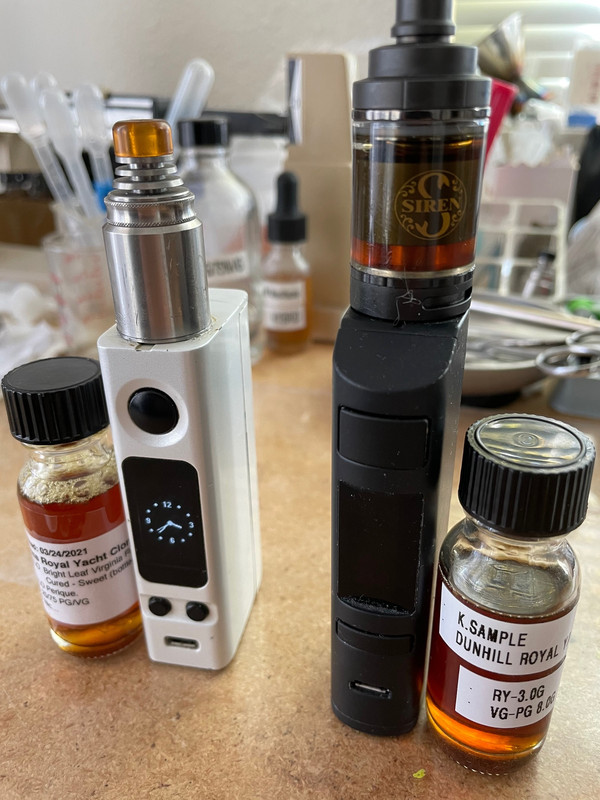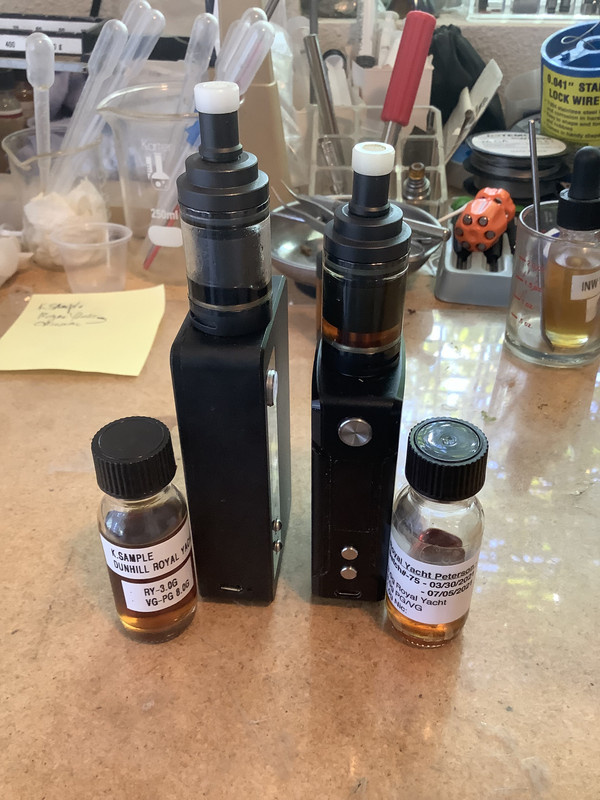I came across this very interesting discussion of Va/Per tobacco blends while reading the "Tobacco Talk" section of the
www.SmokingPipes.com website.
Although the original Dunhill Royal Yacht blend is not specifically mentioned, I think this article does an excellent job to describe the framework into which many of these types of related blends belong. Note that he mentions "The increased portions of Perique bring about more spiciness, more plummy/figgy notes" .. This is exactly the flavor profile that the Original Royal Yacht falls into, and why so many reviews note what is claimed as the "plum note" that they notice. So, therefore, I stand justified in my use of Perique when cloning this blend.

Another interesting item he repeatedly mentions in many different ways, is that the addition of Perique results in various flavor profiles that are very different from each of the pure leafs used alone.
Full credit goes to the original article published:
July 18, 2019 by Kaz C. Walters in Tobacco Talk
=================================
Virginia and Perique mixtures, or VA/Pers as they are sometimes referred to, are pipe tobacco blends consisting of one or more varieties of Virginias that have been lightly spiced with a small portion of Perique. Traditionally, the percentage of Perique in a blend is only three to five percent, introduced to augment and enhance the existing flavors of the Virginias. This low percentage is not only because of the dominating characteristics of the Perique, but also its substantial cost.
As most Perique enthusiasts already know, Perique is processed only in St. James Parish, Louisiana, and must be fermented in oak barrels under extremely high pressure for approximately a year. The process is slow, and can have a high failure rate if oxygen manages to leak into the barrels, which of course contributes to the expensive nature of the varietal. For centuries, Perique has been used in tobacco blends like salt in culinary creations — just enough to enhance the overall flavor (if you can taste salt in a dish, you've added too much. That's the same way Perique was used.)
Modern Virginia/Perique mixtures don't hold so fast to this rule as, with the passing of the ages and the blending experiments that came with them, blenders discovered that Perique in large quantities can present exquisite flavors, as long as the dark, pungent leaf is in balance with the other components. Over time, the definition of a Perique blend has broadened. In this writing I will define the blending styles as I understand them, as well as provide examples of such blends, should readers like to explore and experience the spectrum of the style.
Traditional Virginia Perique Mixtures
As has already been stated, Perique has been a delicacy in the tobacco world since Pierre Chenet developed it in 1824. It's very labor intensive and time consuming to produce, has a comparatively low threshold for success compared to other processing methods (such as fire or flue curing), and is processed only in one small region of Louisiana, leaving entire years' worth of crops often dependent on the cooperation of the weather. All of these factors contribute to the overall expense of Perique, but the final results have shown themselves to be well worth that time and expense.
Traditionally, the percentage of Perique in a blend is only three to five percent, introduced to augment and enhance the existing flavors of the Virginias.
What starts as a strain of Burley becomes a pungent, fruity, earthy, spicy, strong, fermented tobacco that packs a wallop of both flavor and strength, able to bring the absolute best out of the bright, bready, citrusy flavors of flue-cured Virginia tobacco — even in very small amounts. The best examples of the traditional Virginia/Perique blend are largely Virginia forward with added nuance from a condimental addition of Perique. Blends in this style still in production include Rattray's Hal o' the Wynd and Old Gowrie, Escudo Navy Deluxe, Samuel Gawith's St. James Flake, and (for a slightly higher Perique presence), G.L. Pease's Stratford, to name a few, and will all present stellar Virginia flavor with subtle hints of fruit or spice and a depth and strength that they would not possess without Perique.
Modern Virginia and Perique Mixtures
As with all things, blending styles develop and change over time. Blenders experiment, convention is dismissed, and sometimes people just want something new. In recent decades we have seen Perique levels rise in blends, particularly boutique blends, and it doesn't look like these mixtures are going anywhere for the foreseeable future. Pipe tobaccos that I would name as being "modern" would be Cornell & Diehl's Bayou Morning (advertised as having 25% Perique), Chenet's Cake (35% Perique), and Kajun Kake (Perique content not listed, but definitely higher than conventional VA/Pers).
These blends, while containing the two required components for a traditional Virginia/Perique, really don't resemble their predecessors (they ain't your grandfather's VA/Pers). The increased portions of Perique bring about more spiciness, more plummy/figgy notes, and noticeably more strength. While nuance from the Virginia is often sacrificed with this blending style, a new profile is gained and whole new spectrums of flavors are introduced by the Perique. It wouldn't be entirely inaccurate to think of these tobaccos as "Perique and Virginia" blends, rather than Virginia and Perique.
Perique-based Mixtures
We've reached the final category: Perique-based mixtures. These tobaccos are still included in the "VA/Per" family, but I've argued that they don't fit the label. Until there are enough available on the market to argue for the establishment of a new category, I just view them as the rebellious "black sheep" of the Virginia/Perique family. Blends that have been based on Perique's attributes (and that in some instances include very little Virginia) are usually full-bodied, medium to full strength, and surprisingly varied in flavor to have been built around such a bold tobacco, often sharing characteristics of other blend "families."
Examples of such blends include G.L. Pease's Haddo's Delight, inspired by Aleister Crowley, famed adept of the Order of the Golden Dawn who enjoyed straight rum-soaked Perique, is a unique blend heavy in Perique with some Virginias, Burley, unsweetened Black Cavendish and a delightfully boozy topping (making this mixture perfect for smokers seeking a slightly aromatic experience); Mac Baren's HH Acadian Perique, which combines dark Acadian Perique with a touch of Virginia and unsweetened Black Cavendish for richness and sweetness, delicately spiced with Burley, Dark-Fired Kentucky, and Orientals (I personally see this as an English-style blend without Latakia); and finally Cornell & Diehl's Exclusive, which contains a whopping 50 percent Perique with some Red Virginia and Burley for a stout, earthy, slightly sweet experience.
When a fellow smoker exclaims "I smoke VA/Pers," or, "My favorite blends are Virginia/Perique mixtures," some further clarification may be required. Unlike Englishes, where one can safely assume a smoker who indulges in such must enjoy Latakia, or a friend who shares that they have a penchant for Aromatics must be coyly alluding to the fact that they have a sweet tooth, Virginia and Perique mixtures run the gamut of flavors and strengths. One who enjoyed the late Elizabethan Mixture may not find a new favorite in Bayou Morning (however I recommend they give Stratford a go!), and the smoker who appreciates Haddo's Delight may not be too excited about Escudo. Remember that variety is the spice of life; since my study of the dark Acadian leaf, I have concluded that the variety referred to in the old phrase must indeed be none other than Perique.





